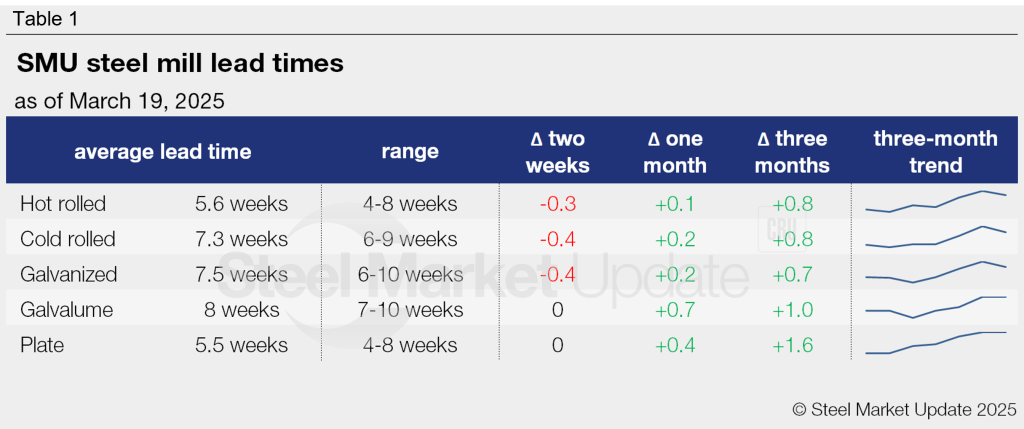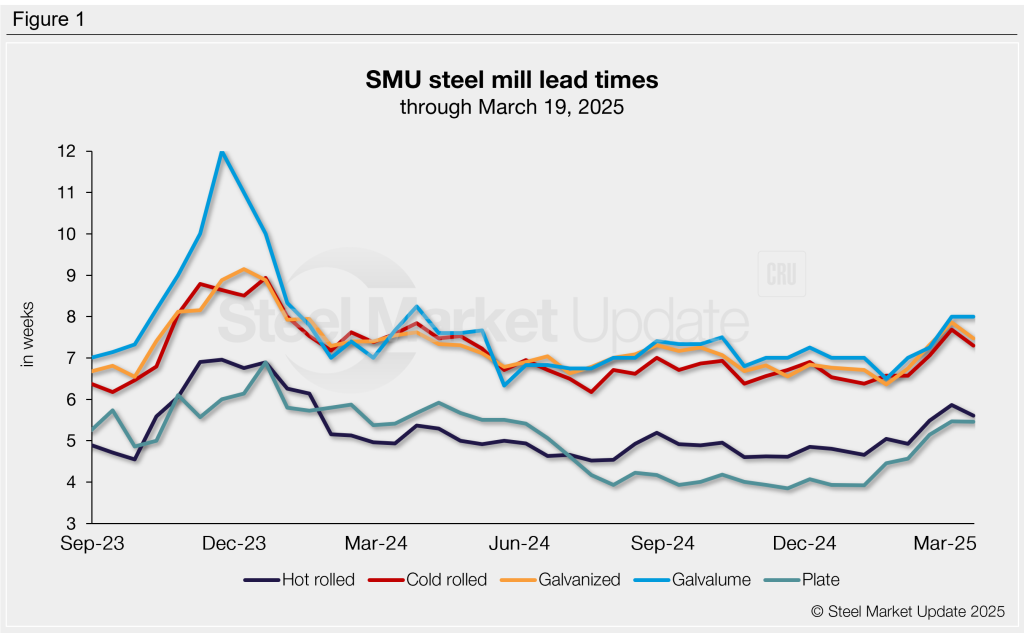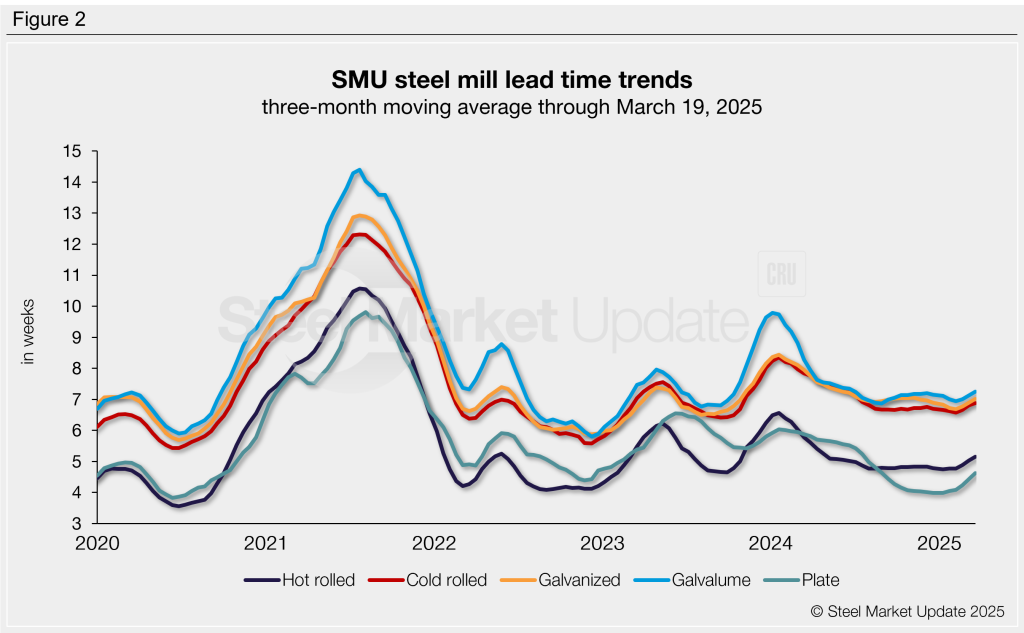Market Data

March 20, 2025
SMU Survey: Lead times stabilize as tariff-induced buying slows
Written by Brett Linton
After a multi-week increase, buyers responding to our market survey this week reported that lead times are stabilizing or marginally declining for each of the sheet and plate products we track.
Steel mill production times had been rising since early February, when a tariff-driven buying frenzy led many buyers to pull forward future orders. As buying patterns return to normal levels, buyers expect lead times to do the same.
This week, we saw slight lead time reductions in hot rolled, cold rolled, and galvanized. Production times remain about a week and a half longer than the lowest levels observed over the past year.
The average lead time for hot-rolled steel is currently just over five and a half weeks. Tandem product production times are between seven to eight weeks. Plate lead times average five and a half weeks.
Table 1 summarizes current lead times and recent trends.

Compared to our March 5 market check, lead times ranges shifted this week for cold-rolled, Galvalume, and plate:
- Cold rolled: The longest lead time in our range declined from 10 weeks to nine weeks.
- Galvalume: The shortest lead time in our range extended from six weeks to seven weeks.
- Plate: The shortest lead time in our range increased from three weeks to four weeks.

Future predictions
The majority of buyers (62%) expect lead times to remain stable over the next two months, up slightly from 59% two weeks ago. Meanwhile 23% anticipate lengthening production times, down from 36% previously. The remainder predict lead times will decline (15%), up from 5% in mid-February.
Here are some of the comments we collected:
“Looking at the mill utilization rates, we are somewhat scoffing at the lead times. We don’t truly think order books are slammed.”
“There is not significant demand.”
“The panic buying will be over and mill lead times will go down.”
“Mills have not hit over 80% cap utilization in over a year.”
“Lead-times are still relatively short.”
“Lead time could increase. Mill will open then close order books to control it.”
“With current mill outages planned, mills will try and hold the line until mid Q3.”
“Mills have capacity.”
“Market will steady.”
“As prices fall, so will lead times.”
Trends
Lead times can be calculated on a three-month moving average (3MMA) basis to smooth out fluctuations in our biweekly data. This week marks the third-consecutive week that 3MMA lead times have increased across the board. This rise follows a year-long decline, during which we saw multi-year low lead times (Figure 2).
Over the past three months, the average lead times by product are as follows: hot rolled at 5.15 weeks, cold rolled at 6.88 weeks, galvanized at 7.01 weeks, Galvalume at 7.25 weeks, and plate at 4.63 weeks.

Note: These lead times are based on the average from manufacturers and steel service centers participating in this week’s SMU market trends analysis survey. SMU measures lead times as the time it takes from when an order is placed with the mill to when it is processed and ready for shipping, not including delivery time to the buyer. Our lead times do not predict what any individual may get from any specific mill supplier. Consult your mill rep for actual lead times. To see an interactive history of our steel mill lead times data, visit our website. If you’d like to participate in our survey, contact us at info@steelmarketupdate.com.







